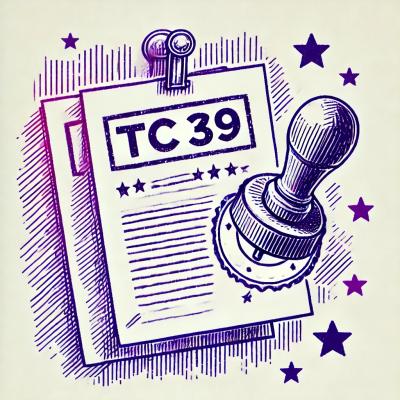BNK48 Facial Recognition Web App
Single Page App for face detection and recognition of BNK48 idol group, running in front-end browser using React and face-api.js (without back-end)

Demo
Check out the Demo in Github Page
How to Run App in localhost
Clone the repository:
git clone https://github.com/supachaic/bnk48-face-recognition.git
In the project directory, you can run:
cd bnk48-face-recognition
npm i
npm start
This will run app in development mode.
Open http://localhost:3000 to view it in the browser.
How to create descriptors profile
This App uses descriptors profile of known faces (facial feature vector of 128 array of number) stored in JSON format as reference for face recognition. The sample profile of BNK48 current members (as of December 2018) is located in folder src/descriptors/bnk48.json
JSON Profile
The JSON profile contains members' nickname and array of 5-10 facial feature vector generate per member from sample photos. We don't store sample photos in the app to save processing time and optimize application size. You can create new descriptor (feature vector) by uploading photo to the app and check Show Descriptors to see the descriptor. If there're multiple faces detected in one photo, app will show all descriptors.
JSON File Format:
{
"MEMBER_1": {
"name": "nickname",
"descriptors": [
[FEATURE_VECTOR],[FEATURE_VECTOR],...
]
},
"MEMBER_2": {
"name": "nickname",
"descriptors": [
[FEATURE_VECTOR],[FEATURE_VECTOR],...
]
},
...
}
Note:
MEMBER_1, MEMBER_2 are object keys to be referred by the Appnickname will be displayed when app recognizes the faceFEATURE_VECTOR is array of 128 number facial feature known as descriptor in face-api.js
Create new profile
You can create new JSON profile of your own and register to the App by editing file name in /src/common/profile.js
export const JSON_PROFILE = require('../descriptors/bnk48.json');
export const JSON_PROFILE = require('../descriptors/YOUR_PROFILE.json');
In this project, with 5-10 feature vector per member for 30-40 members of BNK48 idol group, JSON profile sizes around 1MB before compress, which is good enough for experiment and store in Single Page App. However, if you're going to run facial recoginition for hundreds or thousands people, storing a huge JSON file for reference will not be practical. In this case, you can use front-end web app only to do face-detection and let your back-end (Node.js) to handle face-recoginition. If that the case, I recommend to check face-api.js for more detail.
How to Deploy App to Github Pages
Since we don't need back-end in this project, so any static hosting platform would be sufficient for our small app. To deploy React app on Github Pages will require some trick. Make sure you have all this setting then you will be fine. (if you are not going to use Github Pages, this setup would not be necessary)
Step 1 - You need to have Github account and create new repository. Then you copy the new reposity git URL.
https://github.com/YOUR_GITHUB_ACCOUNT/YOUR-APP-NAME.git
Step 2 - App.js : make sure you have basename: process.env.PUBLIC_URL in Router component
import React, { Component } from 'react';
import { Route, Router } from 'react-router-dom';
import createHistory from 'history/createBrowserHistory';
class App extends Component {
render() {
return (
<div className="App">
<Router history={createHistory({ basename: process.env.PUBLIC_URL })}>
// Your code
</Router>
</div>
);
}
}
export default App;
Step 3 - install gh-pages
npm i gh-pages
Step 4.1 - package.json : add your homepage
"homepage": "http://YOUR_GITHUB_ACCOUNT.github.io/YOUR-APP-NAME"
Step 4.2 - package.json : add predeploy and deploy under scripts as below.
"scripts": {
"start": "react-scripts start",
"build": "react-scripts build",
"test": "react-scripts test",
"eject": "react-scripts eject",
"predeploy": "npm run build",
"deploy": "gh-pages -d build"
}
Step 5 - commit and update your git and run deploy
git add .
git commit -am "make something good"
git remote add origin https://github.com/YOUR_GITHUB_ACCOUNT/react-face-recognition.git
git push -u origin master
npm run deploy
This should push your code to github and deploy to your github page under homepage URL
Note: if you're not going to use Github Pages, you don't have to install gh-pages. (just remove it from package.json file before npm install)
Somethings about face-api.js in this App
This project uses face-api.js for face-detection and face-recognition. The library comes with pre-trained face-detection models, SSD Mobilenet V1, Tiny Face Detector, and MTCNN. The default model is SSD Mobilenet V1, but I choose to use only Tiny Face Detector for its smaller size of weight.
The model weights are located in public/models. And the model functions are in src/api/face.js.
API start with function loadModels to loading models for face-detection, face-landmarks, and face-recognition with tiny face option.
async function loadModels() {
const MODEL_URL = process.env.PUBLIC_URL + '/models';
await faceapi.loadTinyFaceDetectorModel(MODEL_URL);
await faceapi.loadFaceLandmarkTinyModel(MODEL_URL);
await faceapi.loadFaceRecognitionModel(MODEL_URL);
}
If you want to use SSD Mobilenet or MTCNN, you need to load new weight to public/models. You can find all of the weights in face-api.js repo. And follow this instruction to load the correct model for your task.
Function getFullFaceDescription will accept image blob and return with full description (Detection, Landmarks, and Descriptor) of all faces detected in the image. I use Box information from Detection to draw face box. And use Descriptor to input in faceMatcher to find best match. (Landmarks are not used in this project)
export async function getFullFaceDescription(blob, inputSize = 512) {
let scoreThreshold = 0.5;
const OPTION = new faceapi.TinyFaceDetectorOptions({
inputSize,
scoreThreshold
});
const useTinyModel = true;
let img = await faceapi.fetchImage(blob);
let fullDesc = await faceapi
.detectAllFaces(img, OPTION)
.withFaceLandmarks(useTinyModel)
.withFaceDescriptors();
return fullDesc;
}
Function createMatcher accept faceProfile from src/descriptors/bnk48.json as JSON object to create labeledDescriptors of all members with their name and Descriptors arrays. The function then return faceMatcher with all labeled descriptors and display name. The maximum descriptor distance is set to 0.5 for more precise face recognition. (default is 0.6)
export async function createMatcher(faceProfile) {
let members = Object.keys(faceProfile);
let labeledDescriptors = members.map(
member =>
new faceapi.LabeledFaceDescriptors(
faceProfile[member].name,
faceProfile[member].descriptors.map(
descriptor => new Float32Array(descriptor)
)
)
);
let faceMatcher = new faceapi.FaceMatcher(
labeledDescriptors,
maxDescriptorDistance
);
return faceMatcher;
}
export function isFaceDetectionModelLoaded() {
return !!faceapi.nets.tinyFaceDetector.params;
}
faceMatcher will be used in Component DrawBox to find best match if any face detected in the image.
File src/components/drawBox.js
match = await descriptors.map(descriptor => faceMatcher.findBestMatch(descriptor)
License
MIT




